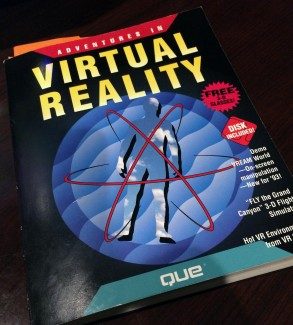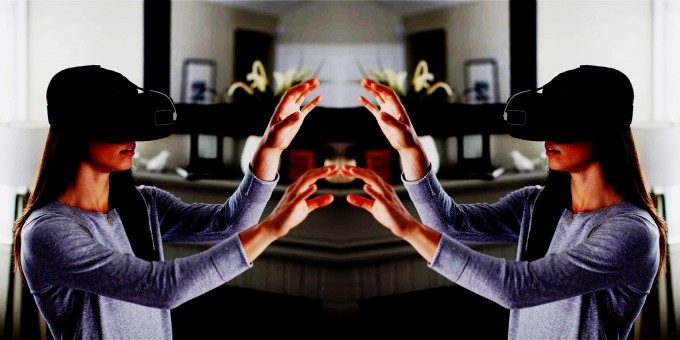For many, the modern era of consumer virtual reality is exciting and new. There’s a palpable pioneering spirit shared by denizens of the rapidly growing industry who want to harness VR technology to do amazing things—world changing things. But there are those to whom this feeling is one of déjà vu.


There are plenty of sections that are easily dated, from the included 3.5″ floppy disk containing virtual reality software, to mentions of VPL and Jaron Lanier. But there are other sections which you might be hard pressed to pick out among a pile of reports from the modern VR era.
This isn’t to say that one group does or doesn’t deserve credit for their work. This isn’t to say that nothing has changed. There are significant reasons why the VR of today is different than VR of the ’90s, and why the VR of the ’90s failed to find a consumer foothold.
See Also: The 3 Most Common Arguments Against VR and Why They’re Wrong
What hasn’t changed though is the feeling. The feeling that VR is important and worth paying attention to. The feeling that VR is poised to grow up and change the world.
The State of Virtual Reality
The art and science of virtual reality is now moving into a different and excitingly new phase. Perhaps historians will call this period “VR–Phase II.”
•••
These twenty-seven years [of Phase I] can be described as the infancy of VR; the time when the equipment was first prototype, tested, and experimented with. The newborn concept of virtual reality was taking its first struggling breaths and opening its eyes. It needed nourishment and tender care from committed “parents.” No one knew if it would live, how long it would live, or what it would “do” when it grew up. It was a time when equipment was bulky, primitive, and feeble in its capacity to simulate the real world.
Phase II will be the time when VR begins to show signs of purposeful development, when some muscles begin to show, and when the toddler takes several steps. VR is now at the point where it begins to walk on its own; people all over the world are trying to influence the direction it will take as it enters its adolescent years.
What’s Happening Now
This new technology of communication and interaction is starting to develop a clear identity. VR equipment developed in Phase II is expected to become smaller, more affordable, and render more realistic simulations. The software is becoming more accessible, easier to use, and more realistic. Many new people will probably become familiar with virtual reality during its second phase.
•••
As faster and more powerful computers and software tools have become more affordable, the accessibility to virtual reality tools has grown beyond the research labs to include a wider audience and greater numbers of designers and developers. This increasing accessibility is resulting in an explosion of new ideas, inventions, and challenging issues that must be addressed. Because VR is an interactive communication technology that generates, modifies, responds to, and affects the perceptions of human senses, it requires the collective expertise of people trained in almost every field of human endeavor. Artists, scientists, psychologists, educators, technicians, engineers, and people in many other fields are grappling with the implications, problems, and challenges of virtual reality.
©1993 by Que Corporation
This is an except from page 51 and 52 of Hayward’s Adventures in Virtual Reality. After giving it a read, you may understand why some of virtual reality’s old guard can come off as jaded… they were once just as optimistic as many of us are today.
See Also: End of an Era – Disney’s First VR Attraction Set to Close
Lead photo based on an image courtesy Leap Motion.

